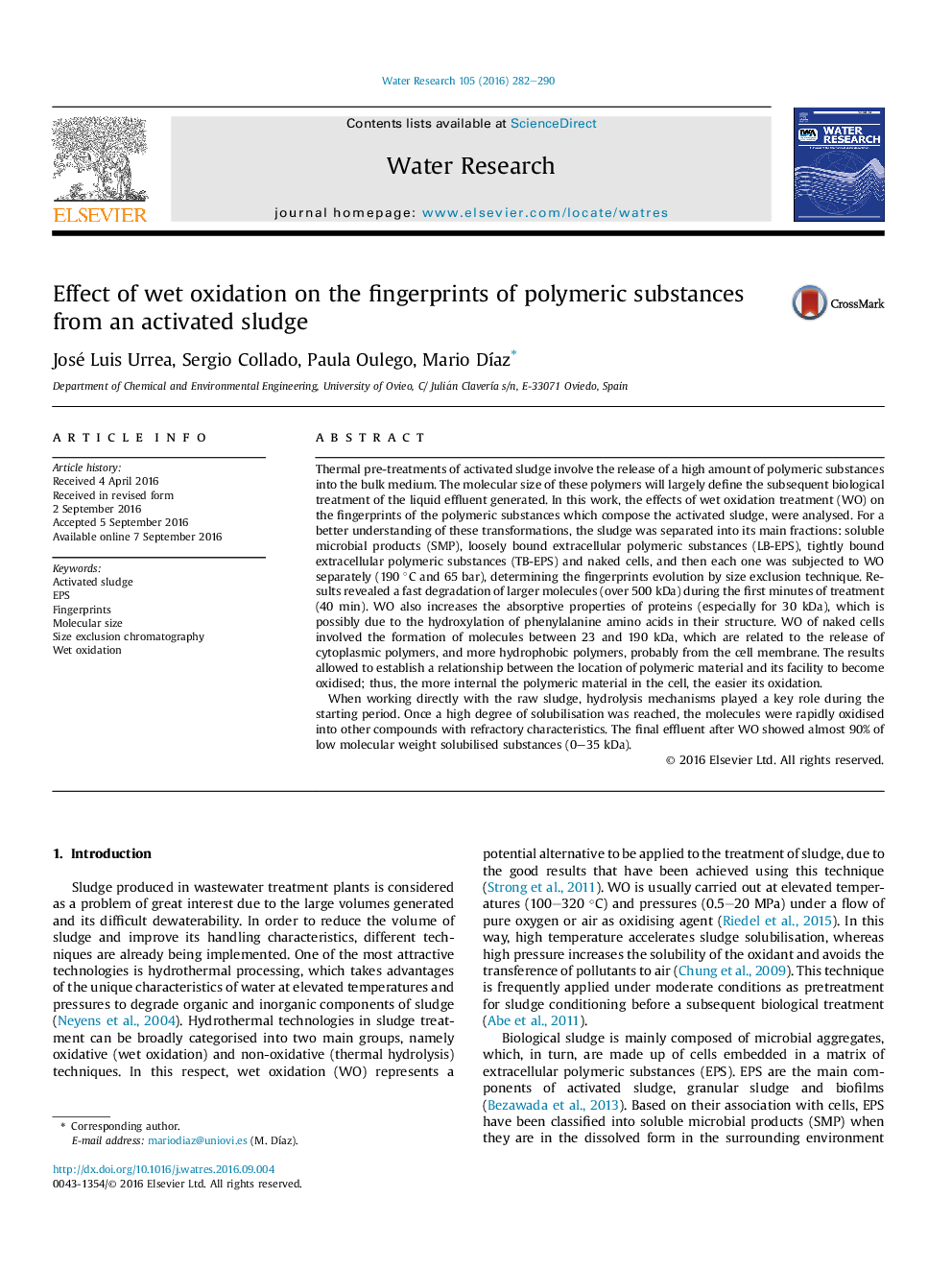| کد مقاله | کد نشریه | سال انتشار | مقاله انگلیسی | نسخه تمام متن |
|---|---|---|---|---|
| 6364589 | 1623063 | 2016 | 9 صفحه PDF | دانلود رایگان |
- High and fast degree of solubilisation initially, with polymers ranging 23-190Â kDa.
- Oxidation reactions have a screening effect on molecular size of polymers.
- Final effluent: 90% of low molecular weight solubilized substances (<35Â kDa).
- Possible proteins modification by phenylalanine hydroxylation during wet oxidation.
- Refractoriness to oxidation: SMPÂ >Â LB-EPSÂ >Â TB-EPSÂ >Â naked cells.
Thermal pre-treatments of activated sludge involve the release of a high amount of polymeric substances into the bulk medium. The molecular size of these polymers will largely define the subsequent biological treatment of the liquid effluent generated. In this work, the effects of wet oxidation treatment (WO) on the fingerprints of the polymeric substances which compose the activated sludge, were analysed. For a better understanding of these transformations, the sludge was separated into its main fractions: soluble microbial products (SMP), loosely bound extracellular polymeric substances (LB-EPS), tightly bound extracellular polymeric substances (TB-EPS) and naked cells, and then each one was subjected to WO separately (190 °C and 65 bar), determining the fingerprints evolution by size exclusion technique. Results revealed a fast degradation of larger molecules (over 500 kDa) during the first minutes of treatment (40 min). WO also increases the absorptive properties of proteins (especially for 30 kDa), which is possibly due to the hydroxylation of phenylalanine amino acids in their structure. WO of naked cells involved the formation of molecules between 23 and 190 kDa, which are related to the release of cytoplasmic polymers, and more hydrophobic polymers, probably from the cell membrane. The results allowed to establish a relationship between the location of polymeric material and its facility to become oxidised; thus, the more internal the polymeric material in the cell, the easier its oxidation.When working directly with the raw sludge, hydrolysis mechanisms played a key role during the starting period. Once a high degree of solubilisation was reached, the molecules were rapidly oxidised into other compounds with refractory characteristics. The final effluent after WO showed almost 90% of low molecular weight solubilised substances (0-35 kDa).
190
Journal: Water Research - Volume 105, 15 November 2016, Pages 282-290
